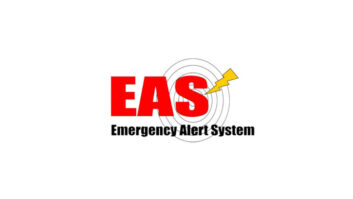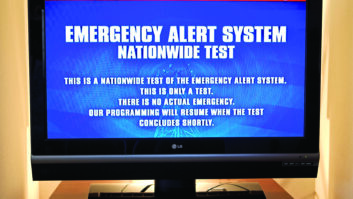We’ve written about stations experiencing looping audio, double audio or no audio, receiving just the EAS tones during last week’s national EAS test.
So just what did happen with the origination audio?
FEMA IPAWS Program Director Manny Centeno told Radio World in an interview the test went off on time, and was delivered across the country. The quality of the originating message was clear for the first four seconds (as evident in many recordings floating around on the SBE listserv and other forums), however a technical malfunction occurred at the national primary level that introduced dual header tones and subsequently decreased the original audio quality of the message for downstream stations. This resulted in distorted audio, according to Centeno.
FEMA delivered the audio to more than 60 Primary Entry Point stations that were all on a telephone conference bridge during the event. All the national primary stations were connected during the test, according to Centeno.
FEMA is testing possible technical solutions. Centeno reiterated that last week’s test will not be the last. “This test is not a one-and-done activity,” Centeno said. “We look forward to approaching the community with lessons learned, hearing their observations in an open forum, and continuing to improve the Best Practices Guide as well as the EAS on a national scale.”
The test also proved that when all technical areas of the EAS — including updated monitoring assignments, proper device configuration and maintenance, and optimal antenna selection — are observed and proactively addressed, the system functions as intended, he said.
Asked whether a particular station introduced the bad audio, Centeno said FEMA is looking into how the audio was introduced into the system and is re-creating the anomaly in its lab.
The test shined a light on other technical issues that need to be addressed as well. Centeno said that through controlled testing, his team will build a list of issues to fix, share it with industry and continue the dialogue that started in the year leading up to the nationwide EAS test. “We’ve established a baseline. We’re going to re-test,” he said.
Until now, he said, the industry had only anecdotal information about how EAS performed in various parts of the country, not a factual look at EAS across the entire nation. “The EAS was tested at the national level because we knew it was necessary. None of us ever thought it would be a perfect outcome. In fact we even identified the pitfalls beforehand and set expectations for what EAS is and is not to our industry,” wrote Centeno on the SBE listserv, expressing a personal opinion as an engineer.
“The EAS was tested at the national level because we all knew it was necessary and a valuable learning experience for identifying limitations. No matter the outcome, our collective goal was always simple: We were going to fix EAS,” he wrote. RW reported before the test that Centeno had noted his concerns.





